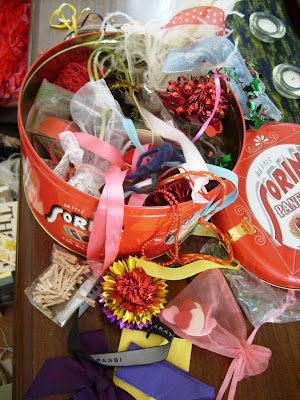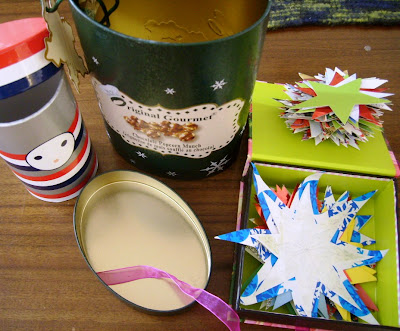I would like to thank the beautiful Eva for the inspiration for today's post.
Eva put a comment at the end of my post on Life Lessons from Dirt Girl, with a link to a smart-phone app showing water fountains and taps for refilling your reusable water bottle all over our city.
And that got me thinking back to my Safe Water post (probably the most critical UN millennial goal of all!), and made me sad (again) that parents the world over still have to bury their children as a result of preventable water-borne illnesses (cholera, typhoid, dysentry, etc., as well as the protozoan and parasitic infections). You can help do something about that here, or here, or here, or even here, if you are so moved.
If you need a reusable water bottle, why not buy one from thewaterproject.org - profits go towards clean water in Africa & India. They sell coffee & coffee travel mugs too, and the stainless steel water bottles are really cool ("This bottle helps provide two children in Africa with clean, safe drinking water for five years. Ask me how.")
On the news last week was a fluff piece on high school kids taking the City of Vancouver's "Tap Water Pledge" and creating a moratorium on bottled water sales at the school. I didn't think much of it (maybe I should have), because back in the day when I went to school there were those old Haws water fountains which worked perfectly well. Aren't they still there?
The students displayed plastic garbage bags full of empty plastic water bottles, showing a portion of the waste generated by the student body. I suppose that nowadays with places like LuLu Lemon promoting adequate hydration (though I would love to point out that they have water fountains for use in their 4th Avenue store - check out the first bullet on their manifesto), trendy water companies like Fiji 'artesian' water (your water is not green - bite me!), and the irrational fear of 'toxins' building up in your body if you don't pee enough (yes, but it would be nitrogenous wastes and nothing evil or mysterious - don't forget you don't want to burn out your precious kidneys!), people in our part of the world are drinking water today more deliberately than ever before. And I suppose it's not a bad thing, in moderation of course (you could drink yourself to death on water due to renal failure so don't overdo it!).
But the empty plastic bottles are just disgusting! We don't need to do that! And certainly not in Metro Vancouver, boasting some of the best water on the planet (I believe that an Abbotsford watershed received international recognition last year for the world's purest water supplies). That said, if you're on well-water in Langley, you might want to continue to get that water tested (I have a friend who's studying fecal coliforms (bacteria from human and animal poo) in the water of that area - test that water!).
 |
| So clear it's hard to photograph. |
I took the Tap Water Pledge. It's easy for me - I do it deliberately whenever I can. Unfortunately, I have some major hinderances - my workplace is primarily in a building that is over 100 years old, and rust flakes and green slime come out of the lead-lined pipes. Hmmm. So I refill my water bottle from the Canadian Springs water coolers scattered around the centre (on campus though, I refill with the water fountains! They're great!).
My other big hinderance is at home. I had Vancouver Coastal Health come out and check my tap water after many discussions with other tenants (who bought bottled water!) and the managers of our building. Those of us with sensitive tastebuds (i.e. people who have the potential to be excellent sommeliers!) have always tasted a nasty metallic tang on our flat-tasting water. The inside of my kitchen faucet was green (and green microbial slime was growing in my Brita jug), so I figured it was time to have it tested. A lady came by with a portable spectrophotometer, tested the concentration of chlorine (which was apparently in range) and said it was fine.
Hmm, yeah. The assumption is that if the chlorine hasn't been depleted, then it hasn't killed microbes, so there aren't enough microbes to worry about. Weak.
The taste of metal and concern about lead remains. "Well, can you test for lead contamination, please?" I asked, knowing that I still wouldn't be able to drink it because of the taste alone. "No, just run your taps for a few minutes to flush the system." She tasted the water and thought it tasted fine. I would not trust this lady to choose wine, by the way - her tastebuds cannot be very keen!
After 2 years of living here, I still can't shake the taste of our building's water. It's gross. And yet all the homes and restaurants in our area have nice tasting tap water. So we do, reluctantly, refill those water cooler bottles at Safeway and use that water to drink (tap water for cooking). I inherited our neighbour's water cooler stand when he moved out (see, I'm not the only one grossed out!).
I feel badly about buying drinking water, because Vancouver really does have lovely tap water. I suppose I'm probably just buying the same water, filtered, from Safeway anyway. Not so economically sound, but I really can't handle drinking this tap water.
And I am being whiny, I know that - I can't even begin to imagine what it would be like to drink this water in Africa (article here on TreeHugger.com). I don't want to. And this shouldn't be happening still.
 |
| Note the contrast - this isn't right. Everyone should have clean, clear water. |
Nevermind that Vancouver has perfect tap water when some of the largest populations in the world have no running water at all! No sanitation, no pipes or plumbing, no faucets or sinks.
MY WATER CHALLENGE TO YOU:
Start by taking The Tap Water Pledge from the City of Vancouver. Let it be known that you care about environmental conservation and stewardship in our city.
Easy, right? Take it further - life is short:
- GIVE A GIFT OF CLEAN WATER - RIGHT NOW. You can do this. Please do this. Take your pick:
- IDE (via ChangingThePresent) - $5 towards safe water and sanitation
- EnterpriseWorks/VITA (via ChangingThePresent) - $10 to purchase a home water filter
- TheWaterProject.org - $10 gives a person clean water for 10 whole years
- UNICEF Gifts of Magic - water, starting from $20 and up
- OxFam Unwrapped "Safe Water" Gift - $22
- WaterCan.com gifts starting from $40 and up
- World Vision gifts - water, starting from $75 and up





























































